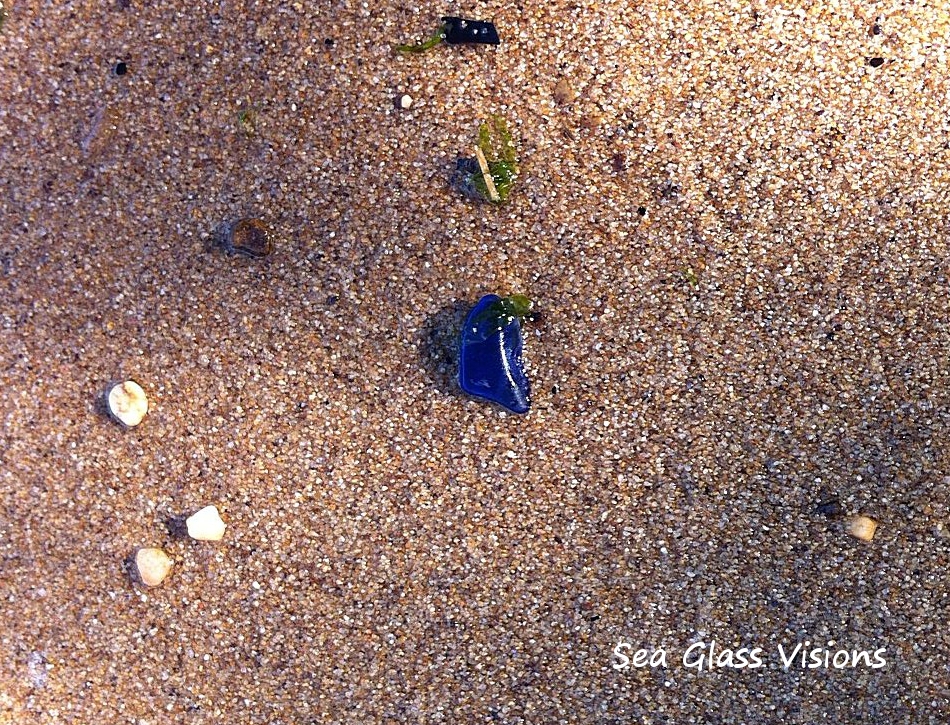Ahh, blue sea glass. Called the Sapphire of the sea. An elusive sea glass color, the color everyone wants to find, but few do. One thing I learned when I started working with sea glass is that a lot of the value of sea glass is based on rarity of color as well as how perfectly frosted and smoothed it is. Blue, especially dark cobalt blue, is one of the most coveted blue sea glass colors. It is said that 1 out of 300 pieces found will be cobalt blue sea glass.
This is an amazing piece of cobalt blue sea glass that was waiting for me on the beach. Beautifully smoothed. How lucky!
Here is a list of sea glass colors – Extremely Rare to Common –
EXTREMELY RARE sea glass colors: deep yellow, orange, red, black, pink, peach, deep purple
RARE sea glass colors: Aquamarine, pale yellow, cornflower blue, amethyst, lavender, cobalt blue, teal, turquoise
UNCOMMON sea glass colors: seafoam green, light green, bright lime green, olive green, light blue, golden amber, jade
COMMON sea glass colors: white, brown, kelly green
Where would blue sea glass have come from? Well in the case of cobalt blue think Noxema. Think Phillips Milk of Magnesia and Bromo Seltzer and Vick’s Vapo Rub. Darker blue bottles were also often used by apothecary and chemical companies. Blue was also sometimes used for poison bottles. Blue was also a very popular color for decorative glass items such as perfume bottles, pitches and water glasses and even wine bottles.
Aquamarine is a blue-green color. This blue-green sea glass color ranks rare, like the cobalt blue, but in some areas is easier to find than cobalt. When I think of aquamarine sea glass I think of old glass insulators. I find a lot of aquamarine colored glass in my area, and generally larger thicker pieces, pieces that may have come from old insulators. I also find aquamarine and light blue bottle bottoms, which are very old.
I think that as a sea glass collector cobalt blue is the most difficult color for me to deal with. I LOVE to find blue, but when I do find a lovely piece it’s very hard for me to make the decision whether I should use it for sea glass jewelry or keep it in my private collection. It usually stays in my private collection.

